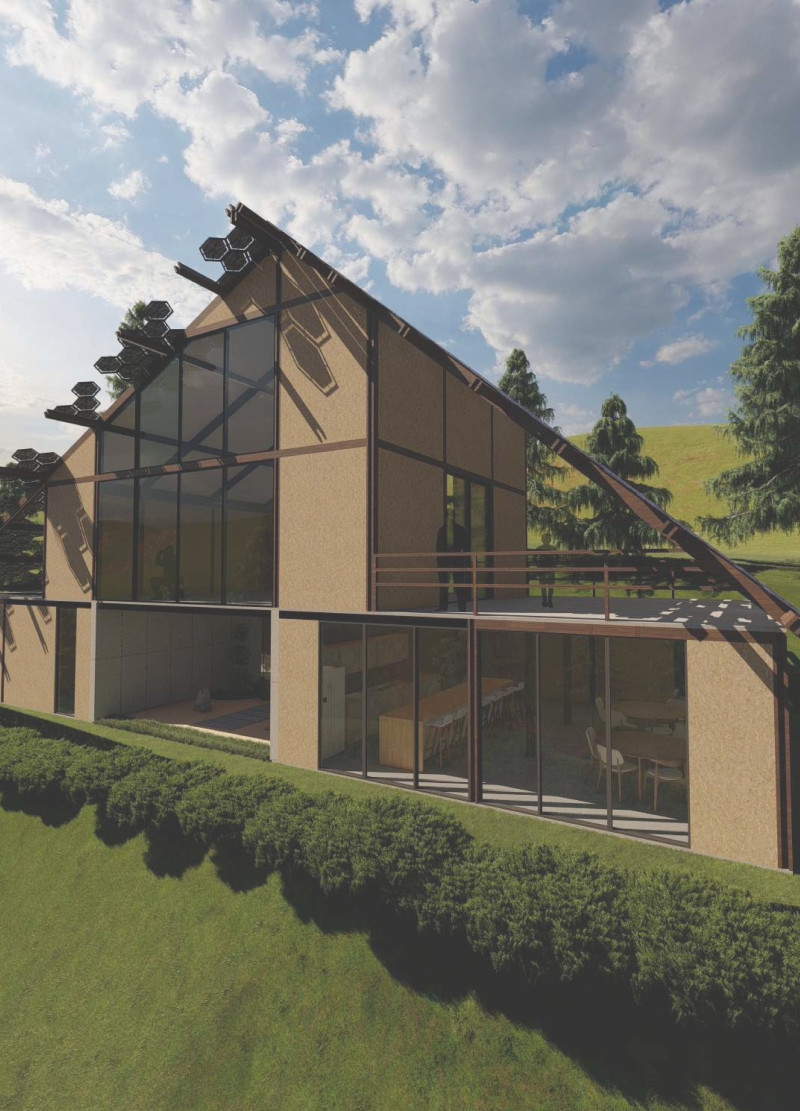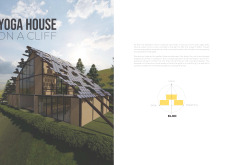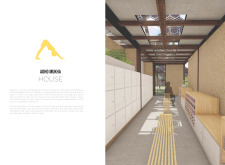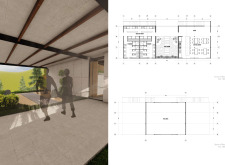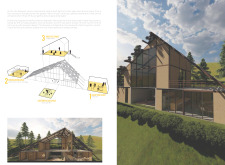5 key facts about this project
The design of the "Adho Mukha House" revolves around the principles inherent to yoga. By creating physical spaces that encourage movement, meditation, and connection to nature, the project emphasizes the profound relationship between environment and well-being. Each section of the house is designed with a specific purpose, contributing to the overall intention of fostering a serene atmosphere conducive to yoga practices.
Entering the house, visitors are greeted by a reception area that functions not just as an introduction to the space, but as a communal kitchen where individuals can gather and share moments before their yoga sessions. This space seamlessly blends function and warmth, setting a welcoming tone for all who enter. Adjacent to the reception, the preparation area includes bathrooms and storage, ensuring convenience and accessibility for users. This thoughtful layout anticipates the needs of its visitors, allowing them to transition smoothly from preparation to practice.
At the heart of the "Adho Mukha House" lies the yoga room, designed to create an open and airy environment that promotes both physical and mental engagement. Large windows fill the room with natural light and offer panoramic views of the surrounding landscape, forging a connection between indoor activities and the outdoor world. This connection is further enhanced by the choice of materials, which are carefully selected to reflect the ethos of sustainability and harmony with nature.
The structural elements incorporate various materials including wood, concrete, glass, and bamboo. The use of wood lends warmth to the space, while concrete provides stability. Expansive glass panels not only maximize natural light but also facilitate open dialogue between interior spaces and nature. Bamboo, renowned for its sustainability, symbolizes growth and resilience, reinforcing the project's commitment to environmental considerations.
Unique design approaches are evident throughout the project. The zoning of spaces into preparation, practice, and contemplation areas allows individuals to engage with their yoga journey in a structured manner. This intentional layout balances individual and community experiences, fostering a sense of belonging without diminishing the autonomy that yoga offers. The inclusion of a Zen garden outside encourages mindfulness and serves as an extension of the practice space—an open invitation for users to retreat into nature.
Furthermore, the positioning of the house on the cliff enhances its connection to the environment. The elevated location not only provides magnificent views but also integrates the experience of being in nature as part of the daily routine. This architectural decision supports the fundamental principles of yoga, reminding users of their place within the larger context of the natural world.
The sustainable features of the "Adho Mukha House," including solar panels, underscore a commitment to eco-friendly living and responsible design practices. By utilizing renewable energy sources, the project not only reduces its ecological footprint but also sets a precedent for modern architectural practices aimed at sustainability.
Visitors are encouraged to explore the project presentation for a deeper understanding of the "Adho Mukha House." By reviewing the architectural plans, sections, and designs, one can gain further insights into the innovative architectural ideas and the underlying philosophy that shapes this unique yoga retreat. Engaging with the various elements captured within the project will facilitate a richer appreciation for how thoughtful design can enhance our well-being and harmonize with the natural environment.


